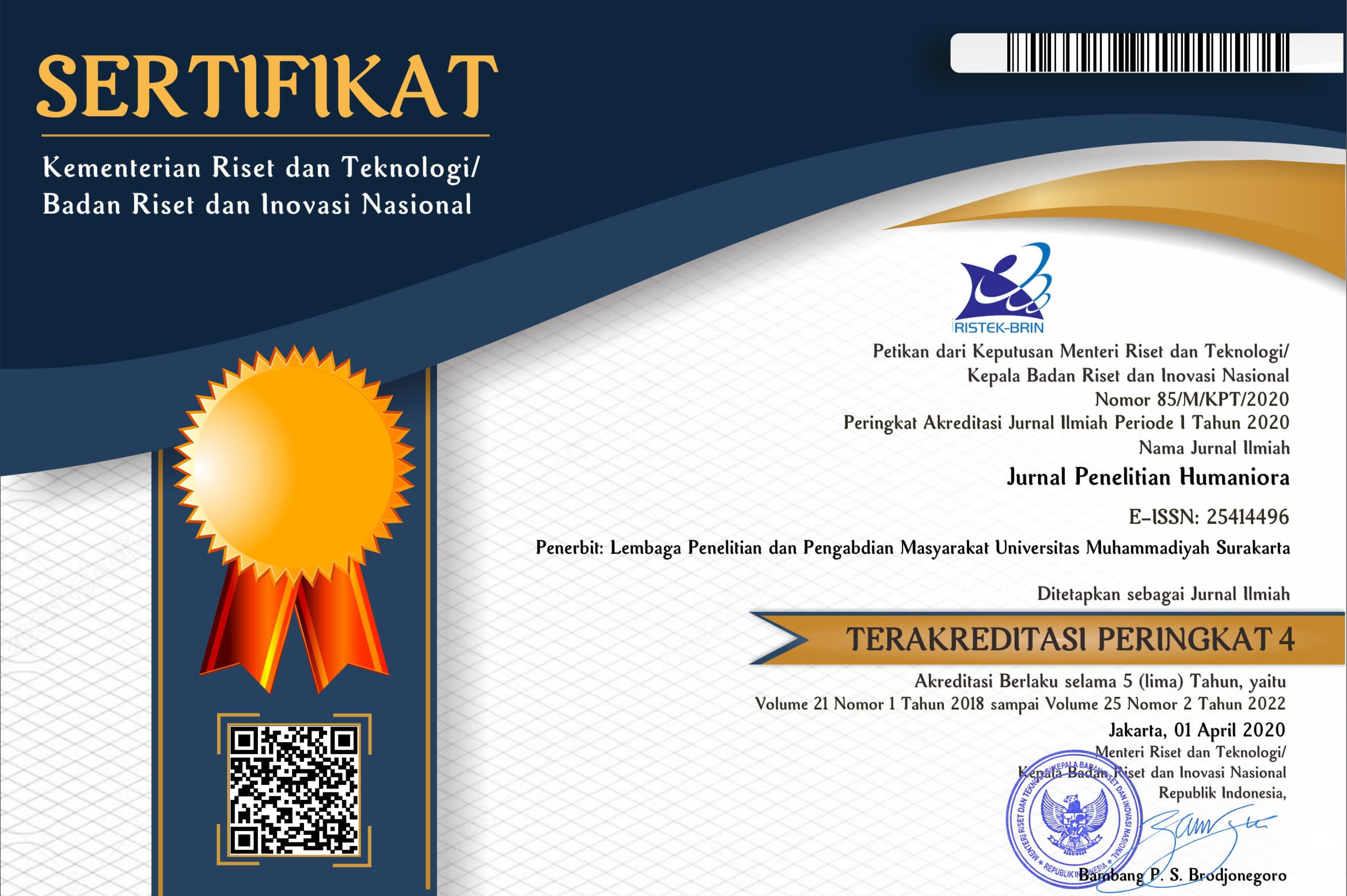RHETORICAL MOVES OF ABSTRACTS: INVESTIGATING ABSTRACTS THESIS OF ENGLISH EDUCATION DEPARTMENT STUDENTS IN SURAKARTA
Karmila Karmila(1*), Malikatul Laila(2)(1) Universitas Muhammadiyah Surakarta
(2) Universitas Muhammadiyah Surakarta
(*) Corresponding Author
Abstract
Keywords
Full Text:
PDFReferences
Amnuai, W. (2019). Analyses of Rhetorical Moves and Linguistic Realizations in Accounting Research Article Abstracts Published in International and Thai-based Journals. SAGE Open, 9(1). https://doi.org/10.1177/2158244018822384
Arono, A. (2019). Abstract Thesis Analysis in Linguistics, Literature, and Lan-guage Teaching Fields. Advances in Social Science, Education and Humani-ties Research, 295(ICETeP 2018), 38–43.
Can, S., Karabacak, E., & Qin, J. (2016). Structure of Moves in Research Article Abstracts in Applied Linguistics. Publications, 4(3), 23. https://doi.org/10.3390/publications4030023
Doró, K. (2015). The Rhetoric Structure of Research Article Abstracts in English Studies Journals. Prague Journal of English Studies, 2(1), 119–139. https://doi.org/10.2478/pjes-2014-0013
El-Dakhs, D. A. S. (2018). Comparative Genre Analysis of Research Article Ab-stracts in More and Less Prestigious Journals: Linguistics Journals in Focus. Research in Language, 16(1), 47–63. https://doi.org/10.2478/rela-2018-0002
Fazilatfar, A. M., & Naseri, Z. S. (2014). Rhetorical Moves in Applied Linguistics Articles and their Corresponding Iranian Writer Identity. Procedia - Social and Behavioral Sciences, 98, 489–498. https://doi.org/10.1016/j.sbspro.2014.03.444
Hwang, C. Shu J., Nguyen, T. H., & Su, T. J. (2017). Move analysis for abstract scientific sections: A study of nanoscience and nanotechnology research arti-cle abstracts. World Transactions on Engineering and Technology Education, 15(1), 19–22.
Ismail, S., & Shah, M. I. A. (2014). A genre analysis of abstracts in Islamic jour-nals. Middle-East Journal of Scientific Research, 20, 75–82. https://doi.org/10.5829/idosi.mejsr.2014.20.lcl.211
Kosasih, F. R. (2018). A Genre Analysis of Thesis Abstracts at a State University in Banten. Lingua Cultura, 12(1), 9. https://doi.org/10.21512/lc.v12i1.1963
Nikpei, H. (2016). Rhetorical Moves of Abstracts Written by TEFL Students and Molecular Biology Graduate Students- A Comparative Study. International Journal of English Language and Translation Studies, 4(4), 172–179.
Sidek, H. M. (2017). Entrepreneurial Education Conference Proceedings: A rhetori-cal Moves Analysis Abstracts. IJASOS- International E-Journal of ADvance in Social Science, III(9), 1112–1119. https://doi.org/10.18769/ijasos.401178
Tavakoli Gheinani, M., & Tabatabaei, O. (2017). A structural move analysis of the abstract section of ISI articles of Iranian and native scholars in agricultural engineering. International Journal of Research Studies in Language Learning, 7(3), 109–122. https://doi.org/10.5861/ijrsll.2017.1864
Article Metrics
Abstract view(s): 724 time(s)PDF: 477 time(s)
Refbacks
- There are currently no refbacks.











